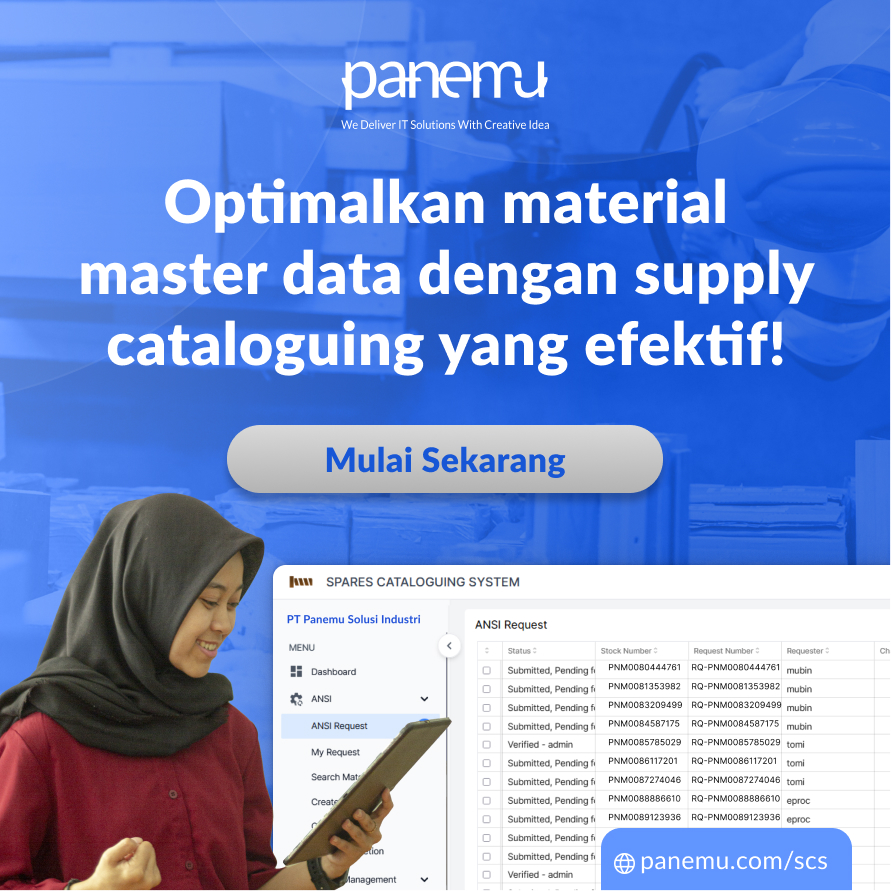Digital transformation has become a major necessity for companies that want to remain competitive in the modern era. One solution that is often adopted is the implementation of Enterprise Resource Planning (ERP). However, investing in an ERP system requires a significant financial and resource commitment. Therefore, it is important for companies to understand how to measure Return on Investment (ROI) from ERP implementation, especially at the beginning of the year when business strategies and budgets begin to be planned.
Measuring ERP ROI not only helps companies understand the value generated from their investment, but also provides insight into areas that need to be improved to gain maximum benefit. This article will discuss strategic steps to measure ERP ROI in an effective way and in accordance with corporate level company needs.
What is ROI in an ERP Context?
ROI is a metric used to evaluate the efficiency or profitability of an investment. In the ERP context, ROI measures the financial and operational benefits obtained from implementing an ERP system compared to the total costs invested. These benefits can be in the form of increasing productivity, reducing operational costs, increasing efficiency, or even strengthening the company's competitiveness.
The basic ROI formula is:

However, in the ERP context, ROI calculations are often more complex because they involve various intangible aspects, such as time efficiency or increased customer satisfaction.
Steps to Measure ERP ROI
1. Identify ERP Implementation Goals and Targets
Before measuring ROI, companies must be clear about the main objectives of ERP implementation. Is it to increase process efficiency, reduce operational costs, or improve data quality? These goals must be measurable and specific so that they can be compared with actual results after implementation.
Examples of specific goals:
- Reduce order processing time by up to 50%.
- Increase inventory accuracy up to 90%.
- Speed up monthly financial reporting from 10 days to 3 days.
2. Calculate the Total Investment Costs (Total Cost of Ownership)
Measuring ERP ROI starts with calculating the Total Cost of Ownership (TCO), namely all costs incurred for implementing and maintaining the ERP system. TCO components include:
- License Fee: Costs to purchase or rent ERP software.
- Implementation Costs: Includes consulting, configuration and data migration costs.
- Training Cost: Investment to train employees in using the ERP system.
- Infrastructure Costs: Hardware, server, or cloud hosting costs.
- Maintenance Costs: Support costs, updates and system repairs.
Make sure all costs are recorded in detail to provide an accurate picture of the total investment.
3. Determine the Immediate Financial Benefits
Direct financial benefits are benefits that can be measured quantitatively and have a direct impact on the company's finances. For example:
- Reduced Operational Costs: For example, reduced labor requirements due to process automation.
- Error Reduction: Reduced costs due to manual errors in data processing.
- Inventory Efficiency: Cost savings due to better inventory management.
Use historical data or industry benchmarks to estimate the value of these benefits.
4. Consider Indirect Benefits
Indirect benefits are often difficult to measure, but they are still important to consider. These benefits include:
- Improved Time Efficiency: For example, the time saved by the finance team in the reporting process.
- Increased Customer Satisfaction: ERP helps provide faster and more accurate services.
- Improved Regulatory Compliance: ERP systems can ensure that companies better comply with industry regulations.
While it is difficult to quantify these benefits, companies can identify proxy metrics, such as customer retention rate or speed of complaint resolution.
5. Compare the Results Before and After ERP Implementation
Conduct a comparative analysis between performance before and after ERP implementation. Use relevant Key Performance Indicators (KPIs), such as:
- Order processing time.
- Production costs per unit.
- Speed of financial reporting.
Make sure the data used is consistent and reflects changes generated by the ERP system.
6. Quantitative ROI Calculation
Once all the data is collected, use the ROI formula to calculate the actual value:

For example:
- Total benefit: IDR 1,000,000,000 (from efficiency and cost reduction).
- Total cost: IDR 500,000,000.
- ROI = (1,000,000,000−500,000,000)/500,000,000×100%=100%(1,000,000,000 - 500,000,000) / 500,000,000 \times 100\% = 100\%
An ROI of 100% means that ERP investment has provided benefits that are double the costs incurred.
7. Monitor ROI Continuously
ROI is not a static metric. Conduct regular evaluations to ensure that ERP implementation continues to provide benefits. Use dashboards or automatic reports from the ERP system to track performance developments.
Strategy to Increase ERP ROI
If the initial ROI has not reached expectations, the company can take steps to increase it, such as:
- Optimize Use of ERP Features: Ensure all relevant modules are used to their full potential.
- Ongoing Training: Train employees to be more proficient in using the ERP system.
- System Integration: Connect ERP with other systems to increase efficiency.
- Better Data Analysis: Use data from ERP for more informed decision making.
Conclusion
Measuring ERP ROI early in the year is a crucial step for companies that want to ensure their investment is delivering the expected results. With a systematic approach and use of relevant metrics, companies can identify areas that need improvement to maximize the benefits of ERP. Additionally, continuous monitoring and strategy adjustments will help companies achieve larger digital transformation goals.
Understanding ERP ROI is not just about numbers, but also about how this system supports the company's long-term vision. With careful planning, ERP investment can be a catalyst for business growth and sustainability.

